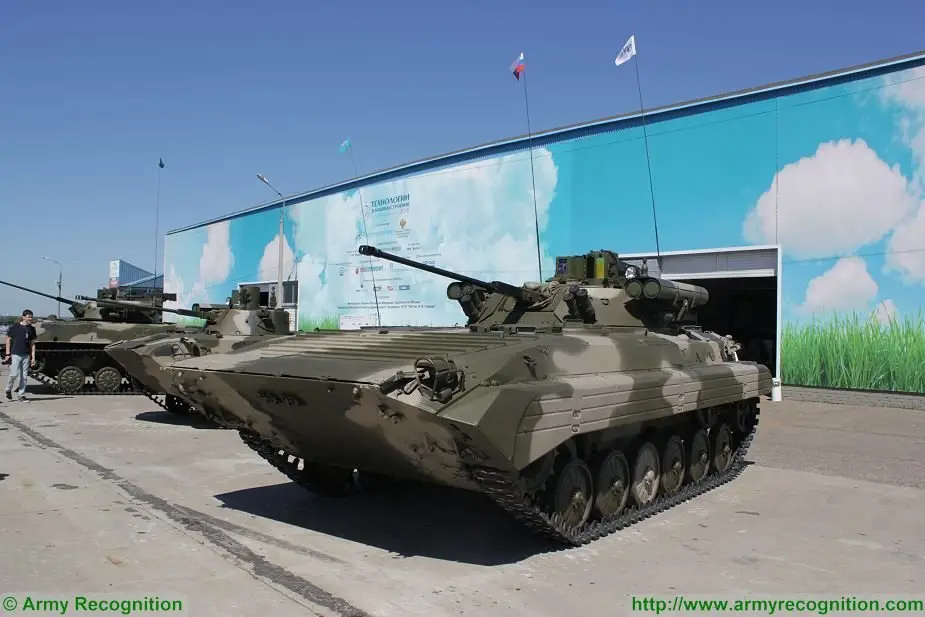Russian upgraded BMP-2M IFVs deployed in Kamchatka
The coastal forces of the Pacific fleet deployed in Kamchatka received upgraded infantry fighting vehicles. The BMP-2M can destroy troops and hardware, including boats. The main advantage is a digital control system integrated into a single network. Marines will be able to receive information from drones and land forces in real-time and provide guidance to aviation and artillery, the Izvestia daily writes.

BMP-2M Infantry Fighting Vehicle (Picture source: Army Recognition)
The upgraded BMP-2M were delivered to the 40th marine brigade of the Pacific fleet deployed in Kamchatka, sources in the Defense Ministry said. The main base of the fleet in the peninsula is an important Russian military facility. Nuclear submarines with ballistic missiles (SSBN) go on combat duty from it. The base in Vilyuchinsk operates two of the tree latest Borey-class SSBN of project 955: the Alexander Nevsky and the Vladimir Monomakh. Yasen-M-class SSGN of project 885M will also be supplied to the Pacific fleet in the coming years. Their construction is ongoing.
"It will not take the soldiers long to master the new hardware. The 40th brigade has untypical armaments for marines. It is armed with artillery, in particular. The firepower is comparable with motorized infantry formations. The brigade can repel attacks on the Pacific fleet base with a broad range of weapons. The marines will defend Vilyuchinsk against subversion and amphibious assault. Antitank guided missiles can destroy adversary boats and floating craft at a major distance while the 30mm gun can destroy any adversary unit," expert Dmitry Boltenkov said. Expert Alexey Khlopotov believes such an upgrade is not costly for the defense budget but is very practical. "BMP-2M can effectively fight subversion teams and destroy land, sea and air targets. They reinforce the defense of the naval base and nuclear submarines there," he said.
BMP-2 modernization proceeded in two stages. The vehicles were dismantled, mechanisms checked and faulty parts replaced. The BMP-2s were then assembled with new components and equipment, including a 30mm automatic gun, Kornet antitank weapon and machinegun. Marines can fire guided missiles to destroy ground armor and boats at sea. The high elevation angle allows firing at helicopters.
The vehicle became more comfortable and has an air conditioner. The main advantage of the upgraded BMP is new electronics and gadgets integrated into a single command system. The crew can use them and the new R-168 digital radio station to communicate with the command, transmit positioning data, images of the battlefield, obtain target coordinates and information on vehicles nearby.
BMP-2M receives information from drones and land forces in real-time and transmits data from its guidance devices. The automatic control system can provide guidance to aviation and artillery in seconds. The vehicle can drive hundreds of kilometers cross-country and is fully autonomous.
The production of BMP-2 began in 1977. Close to 3,000 vehicles are operational. The vehicles with expired life cycle are replaced by BMP-3 and Kurganets. It is a long process. The reliable BMP-2 were tested in numerous military conflicts and have not exhausted the potential, the Izvestia said.
© Copyright 2020 TASS / Army Recognition Group SPRL. All rights reserved. This material may not be published, broadcast, rewritten or redistributed.


























